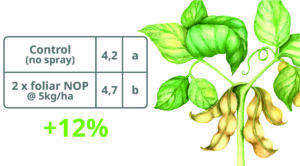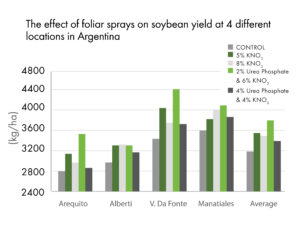The objective was to study the effect of KNO3 application in various concentrations (0,4, 4, 10, 20, 30 mM) on Phytophthora stem rot disease reduction, the growth rate and zoospore release of Phytophthora sojae under laboratory conditions.
1. Effect of potassium nitrate application on disease reduction.
The application of 4–30 mM potassium nitrate (0,4-3 kg KNO3/1000 L) to the growing medium, prior to disease inoculation, greatly reduced incidence of Phytophthora stem rot disease in the two soybean cultivars (Figure 1).

Figure 1. Effect of potassium nitrate on the incidence of P. sojae disease in two soybean cvs, 16 days after inoculation.
2. Effect of potassium nitrate application on mycelium growth.
A concentration of 20–30 mM potassium nitrate led to a slight decrease in the mycelium growth rate of the PJ-H30 isolate on PDA medium (Figure 2). These results might be found, due to multiple effects of direct suppression on mycelium growth in combination with the response of the host plant tissue to potassium nitrate.

Figure 2. Effect of PN application on growth rate of PJ-H30 isolate after 7 days incubation at 23°C.
3. Effect of potassium nitrate application on zoospore release.
All levels of potassium nitrate (0,4-30 mM) significantly (P< 0,05) reduced the release of zoospores (Figure 3).

Figure 3. Effect of potassium nitrate on zoospore release from PJ-H30 isolate on Lima bean agar after 12 h incubation at 21°C.
4. Distribution and accumulation of potassium using Scanning Electron Microscope
Results indicate that increased potassium concentrations in plants were associated with disease reduction in both cultivars (Figure 4).

Figure 4. Relationship between K content in shoots and roots and incidence of disease on Glycine max cv Chusei-Hikarikuro, 16 days after inoculation.
The results of these four experiments suggest the possibility of applying a solution containing 20–30 mM of potassium nitrate (2-3 kg KNO3/1000 L) to decrease the incidence of disease in agricultural fields by the response of plant tissues to potassium nitrate.



